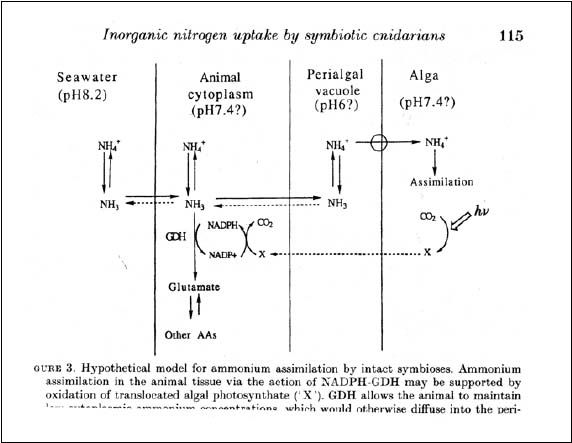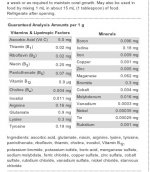i know that increasing irradiance results in an increase in photosynthesis rates. now the high irradiance will create and even more hyperoxid condition that will lead to damage in both zoox and coral tissues, but it is known that corals are more sensitive to reactive oxygen species (ROS). so in this situation, imbalance between ROS production and antioxidant defense leads to cellular damage, and sadly the coral will suffer the most. so i don't think that the zoox loss will be benefical at all.kimoyo said:At high light intensities and large zoox populations there's a point where the coral can't keep up with the demands of photosynthesis for CO2 (carbon source). What happens then? The zoox start drawing directly on the carbonate/bicarbonate entering the coral severely inhibiting calcification/skeletogenesis, almost halting growth and possibly leading to the death of the coral.
Dr. Szmant talked about this in her lectures and I know of several research papers that support this. Look up Marubini & Atkinson 1999, "Effects of lowered pH and elevated nitrate on coral calcification", they did a study showing exactly this.
Sounds like you understand this pretty well and probably better than me. So you know that "blasting" the corals can cause oxidative stress, which leads to super oxide radicals and peroxide, which cause zoox breakdown (loss). This is one of the forms of zoox loss I was referring to.
zoox transfer to their host 95% of their photosyntetic products thereby contributing to a variety of nutritional requirements, such as maintenance, synthesis of new cells, skeletal matrix, mucus, deposition of calcium carbonate and storage of energy-rich compounds for coral reproduction (yossi loya, 2001). thus, when coral a loses its zoox, it loses its main energy resource, putting at risk its essential functions.
and finally about this competition for C that you mention before, well at daytime the intake of carbonates\bicarbonates increases and the main reason is to support the photosynthesis happening in the zoox, so i don't really think that inhibition of calcification is happening under this conditions.
Last edited:







